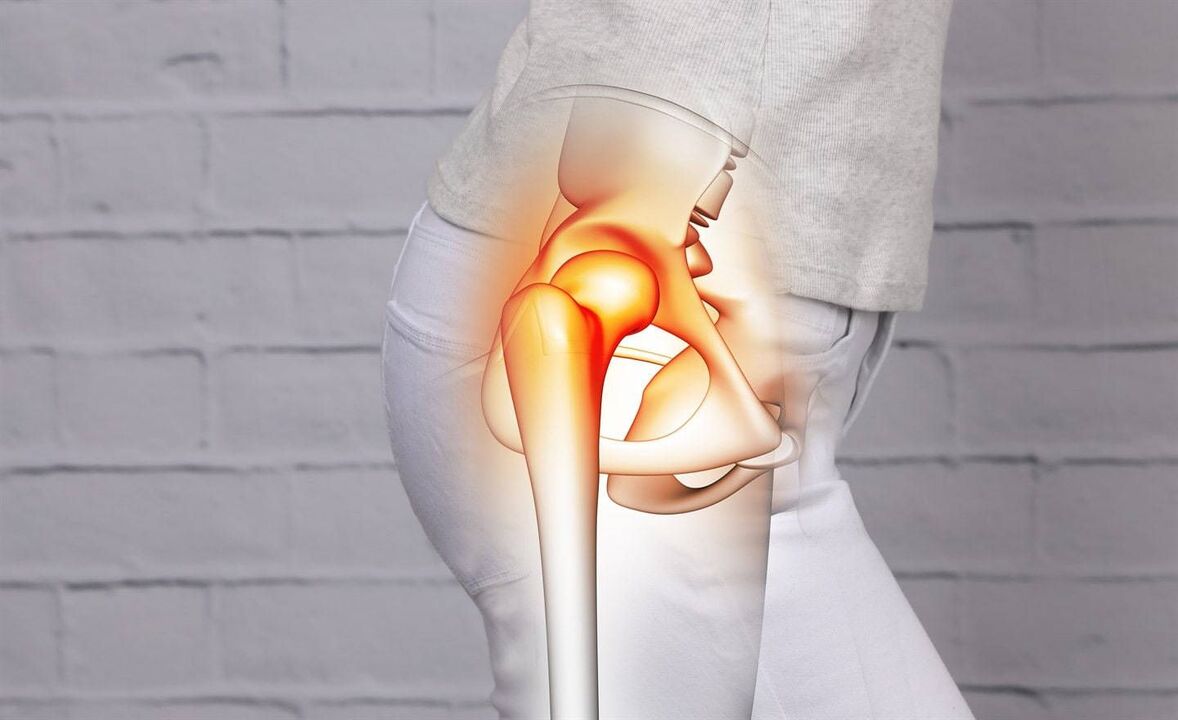
cause of pain
- bruises;
- penetrating injury;
- Femoral neck fracture;
- hip dislocation;
- Fractures of the acetabulum and upper part of the femur (so-called intertrochanteric fractures).
- Various forms of arthritis (infectious arthritis, aseptic arthritis, rheumatoid arthritis);
- Panarthritis - Complete suppurative inflammation of the hip joint;
- osteomyelitis;
- Tuberculosis of hip joint;
- Hip arthropathy and other types of joint disease;
- Bursitis;
- Aseptic necrosis of the femoral head, including Perthes disease;
- chondromatosis;
- Trochantitis.
- Congenital hip dysplasia (dysplasia, congenital hip dislocation, shortened limbs);
- Various malignant and benign tumors;
- sciatic nerve neuropathy;
- Spinal diseases such as osteochondrosis, scoliosis, intervertebral hernia, etc.
- Being overweight greatly increases the pressure on joints;
- Postural disorders;
- Unreasonable use of certain drugs;
- diabetes;
- Neuropsychiatric disorders.
Types and symptoms of hip pain
- Swelling of tissues in the joint area;
- Creaking, clicking, and other sounds when moving;
- Can not move;
- numbness and decreased sensitivity in the legs;
- There is a sense of heat and pulsation in the injured area;
- Lame, drag the leg;
- limb shortening;
- Blood stasis;
- Increased body temperature.
diagnosis
- Ultrasound (ultrasound) of the hip joint;
- Two projection X-rays of the pelvis;
- Magnetic resonance or computed tomography (according to indication);
- joint aspiration;
- diagnostic arthroscopy;
- Laboratory tests (general clinical blood and urine tests, biochemistry, rheumatoid factor analysis, tumor markers, etc. ).
Hip pain treatment
- antibacterial drugs;
- anti-inflammatory drugs;
- corticosteroid hormones;
- painkiller;
- chondroprotectant;
- Cytostatic;
- Ointments, creams, and other topical preparations that stimulate blood flow;
- vitamin complex;
- Synovial fluid substitutes.
- massage;
- UHF;
- Laser Treatment;
- electrophoresis;
- magnet therapy;
- shockwave therapy;
- Spa and swimming.
- Reduce dislocations;
- reconstruction of individual joint structures;
- Endoprosthesis;
- removal of tumors;
- joint fixation (arthrodesis);
- Joint replacement surgery.
complication
- limb deformities;
- limp;
- Pains turn into chronic forms (in this case, they are almost constant);
- Violation of intra-articular mechanisms;
- deep vein thrombosis;
- Heterotopic ossification (the formation of bony plates in soft tissue);
- joint;
- Contracture: Impaired joint movement;
- necrosis;
- Pathological fracture.
prevention
- Exercise more, but don’t overload your body with overtraining;
- Monitor weight to prevent obesity;
- Eat a nutritious and varied diet (nutrition should be balanced in terms of essential macronutrients and micronutrients, as well as total caloric content);
- Do not use systemic medications without a doctor's prescription.




























